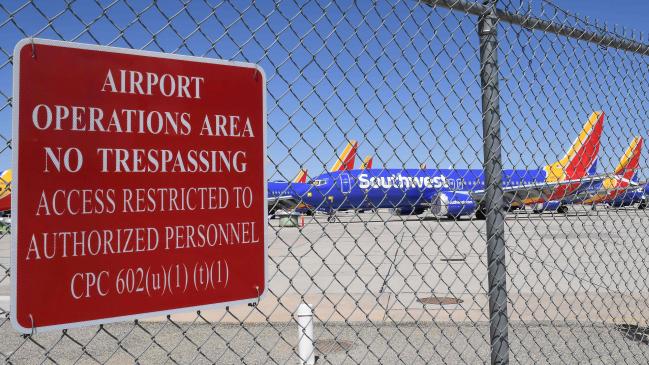
This article is more than
6 year oldBoeing needs more time to find fix on-board the MAX 8 aircraft

Boeing and US aviation regulators say the company needs more time to finish changes in a flight-control system suspected of playing a role in two deadly crashes.
The Federal Aviation Administration (FAA) said it anticipated Boeing’s final software improvements for 737 MAX airliners “in the coming weeks”.
Boeing was expected to complete the work last week, but FAA spokesman Greg Martin said the company needed more time to make sure it had identified and addressed all issues.
Chicago-based Boeing offered the same timetable as it works to convince regulators it can fix software on the planes.
“Safety is our first priority, and we will take a thorough and methodical approach to the development and testing of the update to ensure we take the time to get it right,” said Boeing spokesman Charles Bickers.
Boeing needs approval not just from FAA but elsewhere, including Europe and China, where safety officials have indicated they will conduct their own reviews.
The planes have been grounded around the world since mid-March. The news from the FAA suggests airlines could be forced to park their MAX jets longer than they expected. Airlines that own MAX jets are scrambling other planes to fill some MAX flights while cancelling others.

“We are aware that the resumption of service for our 737 MAX aircraft may be further delayed, and our team will work with all customers impacted by any flight cancellations,” said American Airlines spokesman Ross Feinstein. American Airlines had been pointing towards a late-April return of its 24 MAX 8s. Over the weekend, Southwest Airlines announced its 34 MAX 8s would be removed from the schedule through May instead of mid-April. United Airlines has idled its 14 MAX 9s through June 5.
Separately, US regulators and Boeing are awaiting a preliminary report from Ethiopian investigators into the March 10 crash of an Ethiopian Airlines MAX 8 jet shortly after takeoff from Addis Ababa. The report will be scrutinised for information from the plane’s data recorders that might suggest similarities between the doomed flight and the October 29 crash of a Lion Air MAX 8 into the Java Sea off Indonesia. The two crashes killed 346 people.
Data from the Indonesian plane indicates pilots unsuccessfully fought the automated anti-stall system for control of the plane, which plunged into the sea shortly after takeoff.

According to published reports, the same system activated on the Ethiopian Airlines flight.
Boeing is making changes in an automated system that is designed to prevent the plane’s nose from rising, which can lead to a dangerous aerodynamic stall. The changes include relying on readings from more than one sensor before the anti-stall system activates and pushes the nose down and making the system’s actions less severe and easier for pilots to handle. Boeing has said it will pay to train pilots on the technology.
Two American Airlines pilots who attended a session with Boeing experts last week expressed satisfaction with the manufacturer’s changes. American’s chief 737 pilot, Roddy Guthrie, said Boeing added “some checks and balances in the system that will make the system much better”.
Congress, meanwhile, is looking into the relationship between Boeing and the FAA. The House Transportation and Infrastructure Committee said on Monday it had requested records from both Boeing and the FAA related to the certification of the 737 MAX.




